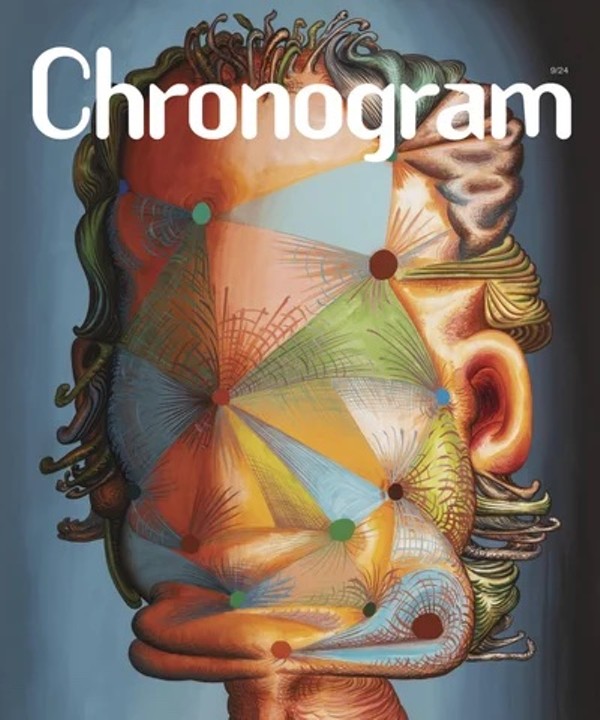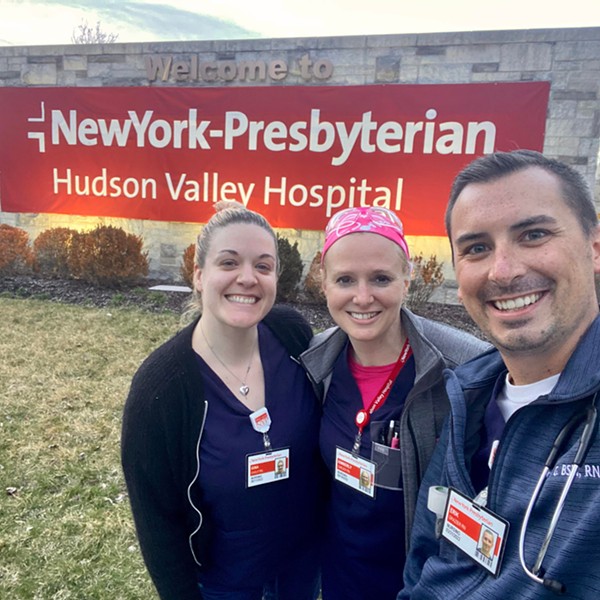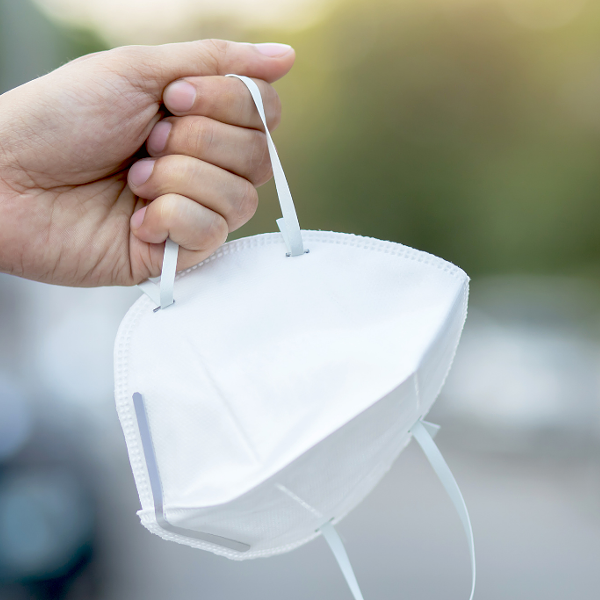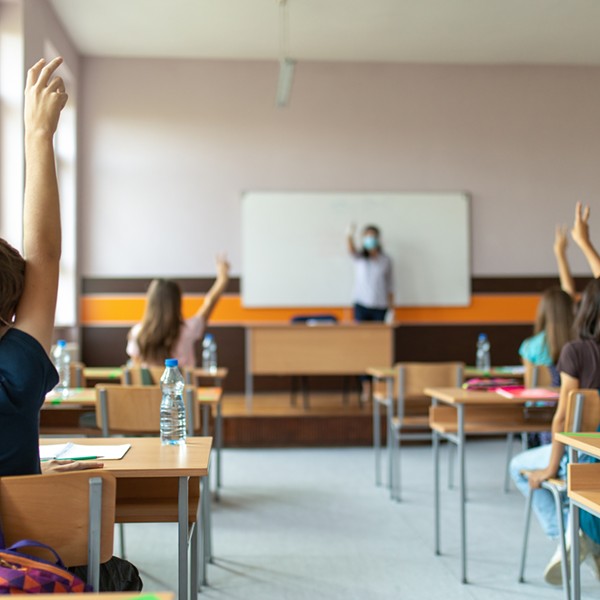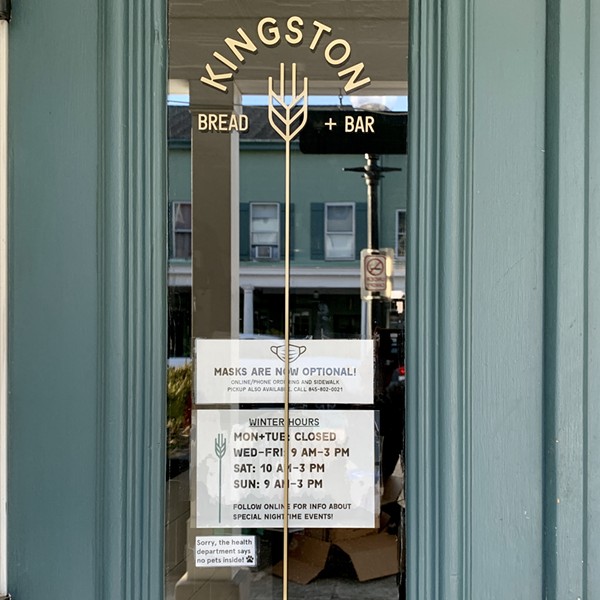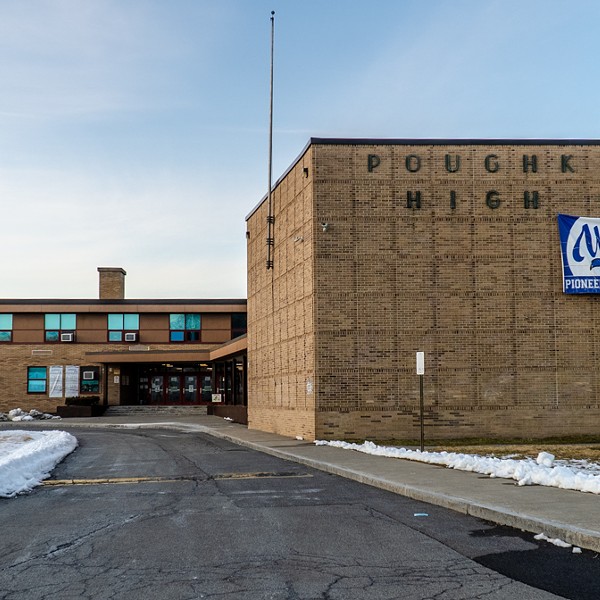Like school districts throughout the country, the Kingston City School District’s routines were upended by COVID-19 over the last year. Learning went remote in March of 2020, and despite hybrid efforts last fall, the district did not return to exclusively in-person classes (with limited schedules) until April 19 of this year.
Even with mitigation efforts, the KCSD was hardly immune to the health effects of the pandemic: according to the state-run COVID-19 Report Card, at least 349 persons (259 students and 90 faculty members) in the district tested positive for COVID-19 over the past year.
Adding to the immediate public health pressure was the challenging timing of the pandemic in a district already struggling along several lines. KCSD had previously been named as a “Target District” for the 2020-21 school year via a statewide tool for recognizing underperforming school districts, and two Kingston schools—MC Miller Middle School and JFK Elementary School—were specifically named as needing “Comprehensive Support and Improvement,” identifying them as “among the lowest performing” in the state, according to the KCSD website.
So it was with optimism and relief that many parents and faculty greeted an influx of $21.6 million in federal funds for the KCSD, via the Coronavirus Response and Relief Supplemental Appropriations Act (CRRSA, totaling $6.4 million) and the American Rescue Plan (ARP, $15.1 million), passed in December 2020 and March 2021, respectively. The money has been especially welcomed as a means of addressing long-simmering inequities in the district—particularly around BIPOC representation, technological limitations, worsening infrastructure, and related issues.
But numerous parents and staff have expressed deep frustration with how the KCSD has conducted outreach around these federal funds, and more generally, about the district’s priorities in an environment deeply altered by the past year.
In response, a group of parents, faculty, and community members—centered around the KCSD Coalition for Equity in Education—is demanding significant changes in how the district approaches both the federal funds, and in some respects, pedagogy in the city more generally.
Disruption Through COVID
While the pandemic was unprecedented, a number of parents and staff voice major concerns with the district’s overall response to COVID-19.
Charlotte Adamis was a librarian in the KCSD until September of 2020, but retired early when the district refused to let her teach remotely, despite her having asthma, her age (60), and her presenting two doctors’ notes. She is largely unimpressed with the KCSD’s response to the pandemic. “I think [the administration] caved to pressure a lot of the time,” she says. “I think the teachers were forced back into the building because it looked better. The whole thing was very politicized.”
Adamis, who would have preferred to keep teaching, also describes lax safety standards around mask wearing in schools, noting that at a union meeting last September, “the head nurse who was running the COVID response told us, ‘Listen, if you’re sharing a room with somebody and the two of you feel comfortable, you can take your masks off’”—a policy, Adamis noted at the time, that was in violation of New York State law and contrary to CDC guidelines.
An active Kingston teacher, who spoke off the record, confirmed Adamis’ comments, saying that COVID-19 spread widely among staff in classrooms: “I felt like my safety was not a priority, and the kids’ safety was not a priority.”
Concerns about limitations in remote learning also abound. While numerous parents acknowledge that the district was forced to improvise, many still describe a functionally unworkable system, which included inconsistent internet connectivity and limited access to laptops, particularly for low-income and Spanish-speaking residents. “I know there are parts of the district where internet connectivity is really bad, and those people had a difficult time logging into school,” says Malia Cordel, a KCSD parent. “Some families [were] told to share devices with multiple children in school, which is just absurd and makes schooling impossible.”
Pursuing Equity in Education
For many parents and teachers, the interruption of traditional learning due to COVID-19 has worsened longstanding issues in the community. “I just watched [the learning] gap widen,” says the active teacher. “If English was your first language and you did not have a learning disability, for the most part, as long as you had access to technology, you grew. For kids who didn’t have access, that chasm just grew so much wider.”
The insistence on equity—in a district that includes 47 percent BIPOC students, but just 6.3 percent BIPOC staff, according to the KCSD Coalition for Equity in Education—is increasingly urgent for parents. “It’s a very white-led community,” notes Adamis, “and it’s not a white community…it’s a diverse community that should be represented at every level by an equally representative group of people.”
For its part, the district notes that funds have been slated to hire two new positions: a director of diversity, equality, and inclusion, and an associate director for educators of color, to actively recruit a more diverse staff. Many parents and staff vocally support the initiatives. But many also feel they are insufficient, and that the district has been slow on these issues.
“While we agree that these positions are essential towards making the Kingston staff, faculty, and administration more representative of our student population, these two hires alone are nowhere near enough to correct the deep inequities present in the KCSD,” the Coalition wrote in a June 15 letter to Superintendent Paul Padalino and the Board of Education.
Limited Outreach
In interviews and in the letter to Padalino, which grew out of a June 12 in-person meetup and a survey answered by 183 individuals in the KCSD, parents and teachers describe a host of interrelated issues they seek to address: the need for air conditioning and improved air filtration in schools, better food options, more educational opportunities before and after school, increased access to technology for students, and increased mental heath support for students and staff, among others.
But the dominant thread running throughout is a desire for more active community involvement in the district’s plans. The perception of poor outreach by the KCSD—“abhorrent,” in the words of one parent—and a top-down approach by the district appear to be widely shared. Parents describe the problem as endemic, particularly in a heavily Spanish-speaking, and in some cases, technologically constrained community.
“I think there’s been limited outreach in Spanish,” says Cordel. “At least 30 percent of the families in our district speak Spanish at home. Some of this [school-oriented] language can be quite difficult [for people] I know who haven’t completed higher levels of education.”
Diana Lopez Martinez, a parent of three children in the district and organizer with Nobody Leaves Mid-Hudson, concurs. “Sometimes in English [something] messages one way, and in Spanish, when you translate it, it messages another way,” she says, emphasizing the need for better translation for Spanish-speaking families. “They should invest in the language access tools.”
Superintendent Padalino is largely supportive of the district’s response to the pandemic, and believes KCSD has made strides in racial equity issues over the last several years. “We’ve been [working on] culturally responsive education and racial equity for years,” says Padalino, mentioning a partnership with the NYU Steinhardt School of Culture, Education, and Human Development to institute more culturally responsive education, as well as teacher-training work with Dr. Alex Pietersie, a professor in the SUNY Albany School of Education.
While Padalino concurs that “we need to do better,” he sees much of the recent outreach as thorough. “We did three town halls,” he notes, referring to community outreach around the federal funds, adding, “I did 19 group meetings about this…with representatives from the Boys & Girls Club, the Ulster Immigrant Defense Network, the Center for Creative Education, Citizen Action, the Kingston Emergency Food Collaborative,” and several others.
But multiple parents described the town halls as limited in approach and poorly attended. The process of soliciting community input was federally mandated, at least in the case of ARP funds, and was known to be required as early as April. One parent said most town halls were attended by fewer than 10 people, in part due to being scheduled at inconvenient times for working parents. They point to in-person, community-oriented meetings—like their June 12 meetup—as far more useful in soliciting representative community input.
The sentiment extends to faculty; the teacher who spoke anonymously expressed frustration with limited meaningful outreach to staff through the pandemic. “I was hopeful that in the fall…[when] it was very clear that COVID was not going to end and that we would need to have a plan in place…that the district would reach out and ask the teachers, ‘How were things, what could be improved?’” the teacher says. “None of that outreach happened. They very clearly did not want to hear from any of us. All the town hall meetings were one-way information. They were screening people’s questions.”
While Superintendent Padalino insists Kingston compares favorably to comparable city school districts in the Hudson Valley and Upstate New York—like Troy, Middletown, Newburgh, and others—multiple parents noted that things were noticeably better just next door, in the Onteora School District.
Molly Heekin, a parent in the KCSD and teacher in Onteora, describes a system of effective communication with teachers in the district where she works. “Our superintendent and assistant superintendent were having weekly meetings [with teachers],” Heekin says. “They were meeting with us every week to give us updates, and let us ask questions, and to make plans together. I know that did not happen for teachers in Kingston. Kingston was getting emails on Friday afternoons about how things were going to run on Monday.”
Heekin also notes that Onteora instituted a new social-emotional learning curriculum last year, just prior to the pandemic, developed by the Morningside Center in New York City, which she describes as having been uniquely helpful in dealing with the emotional upheavals and trauma of the past year.
Working Toward a Better District
Many parents insist that their goal is a collaborative approach with the district, not an explicitly confrontational one. “We want the school district to be better,” says Heekin. “We want to work with them to make it better. It’s not as though we’re out there going, ‘These guys are horrible,’ and just complaining. We’ve been actively communicating with them, communicating with the community, then bringing things back to the district…working toward a better district, essentially.”
While the CRRSA and ARP proposals were submitted by the district on June 15 and June 30, respectively, the plans can be modified, and the community will continue to have a role in the process.
Multiple parents emphasize that ongoing organization and real community engagement will be key to pushing things in a more student-oriented direction—and they believe that their efforts thus far have had greater success in reaching a wider and more representative swath of the community than the district’s.
“I think more and more people are learning about what’s going on,” says Cordel. “We talked to some new people and people in different parts of the community who don’t normally get heard, or feel like they’re left out of the conversations.” Cordel and others indicate they intend to continue in their efforts. “I feel like we’re just getting started, honestly.”









